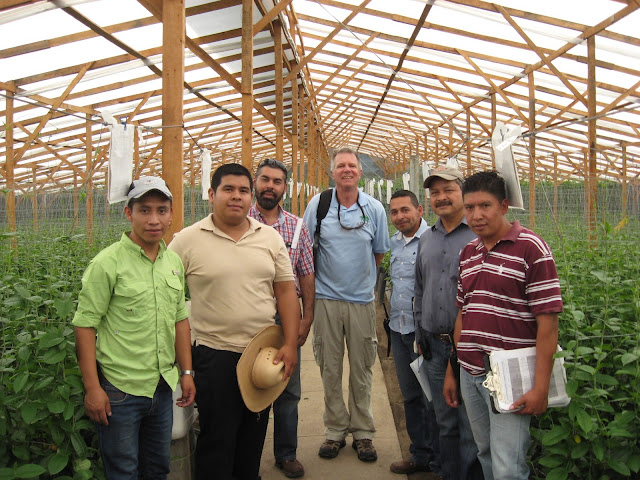Strengthening Integrated Pest Management (IPM) Strategies in the “Land of Eternal Spring”
By F2F Volunteer Don Schultz

My two week assignment seemed barely long enough to simply gain some understanding of the situation, so I knew beforehand I would be challenged to accomplish my goals. Notwithstanding, I was quite impressed by the advanced level of knowledge and dedication by the agronomists at some of the ten farms I visited. They are producing quality plant material and were interested in improving their IPM programs. The advice they sought, however, was usually centered around a different pesticide that could be used. Some producers seemed to be somewhat stuck in the classic pesticide treadmill by applying pesticides at regular, and sometimes excessive levels. Their reasons were understandable – without another good option they would suffer reduced production and lesser quality than would be acceptable from buyers. Other farms that I visited were smaller and had agronomy staff that was dedicated, but less educated. I was able to assist them with some standard IPM strategies such as solarization of potting soil mixes and improved monitoring techniques, as well as a better understanding of pesticide labels. I also helped them with plant nutritional needs and fertilizers, especially related to nitrogen.

Pesticide safety standards in Guatemala are what you would expect when there is limited worker protection laws related to the handing of pesticides. While most larger farms are very conscientious of worker protection, many small operation allowed workers to handle hazardous and, in some cases, dangerous pesticides without proper protection. I took every opportunity to discuss this with all workers, informing them of safe pesticide handling methods.
At the end of the farm visits, I was invited to give a four-hour presentation at the AGEXPORT office in Guatemala City. The event was attended by numerous agronomists, college professors as well as employees from the National Agricultural Ministry. As a result of conversations and discussions during these two days I realized that there was a lack of reliable studies and other resources to help them in their pest management strategies. This explained why many had the mindset to simply apply pesticides as needed.
During the presentation I also discussed the level of information sharing and research related to pest management that occurs in California. I showed them the extensive amount of information on the UCIPM web site and on pesticide labels of product sold in the United States. I also gave a presentation on the pesticide use standards and training material available through the California Department of Pesticide Regulation (most of it in Spanish). I tried to instill a sense of responsibility to create a safe pesticide use culture, despite the lack of laws and regulations.



.png)

Comments
Post a Comment